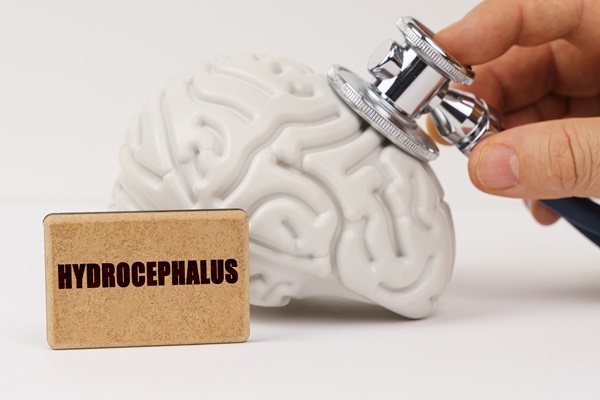There are two known surgical hydrocephalus treatment available: placing a shunt or performing an endoscopic third ventriculostomy. Both methods effectively relieve the excess fluid surrounding the brain and, in turn, the pressure. Take a closer look at this disease, how we determine an appropriate treatment, and what to expect during each.
A Quick Glance at Hydrocephalus Treatment
Briefing hydrocephalus
Hydrocephalus is a serious condition in which excess cerebrospinal fluid builds up in the brain's ventricles. The ventricles already have fluid, helping the brain function properly, receive nutrients, drive out waste, and act as a shock absorber. When there becomes too much, it can lead to:
- An unusually large head
- Bladder incontinence
- Impaired cognitive function
- Impaired motor skills
- Impaired vision
- Irritability
- Lethargy
- Prominent scalp veins
- Seizures
- Vomiting
According to the American Association of Neurological Surgeons (AANS), there are many more signs an individual can experience with hydrocephalus. Some are also more prominent in children, while others are more prominent in adults. Per the National Institute of Neurological Disorders and Stroke (NINDS), hydrocephalus affects one to two in every 1000 children and is typically diagnosed right after birth or in early childhood.
It is good to note that patients can experience different forms of hydrocephalus. It can result from a developmental disorder, head or spinal trauma, or be inherited. Moreover, while some symptoms are rather obvious, the surgeon will still need to perform a consultation to determine which surgical method is most suitable. The surgeon will perform a complete neurological examination in addition to imaging tests, a lumbar (spinal) tap, intracranial pressure monitoring, and an isotope cisternography.
Hydrocephalus treatment options
The most common hydrocephalus treatment is inserting a shunt in the skull. A shunt is a device that diverts the excess cerebrospinal fluid away from the brain. Its design consists of a catheter (flexible tube) and a valve.
During the procedure, the surgeon will shave the hair over the surgical area. They then create an incision flap in the skull, allowing clear access to the skull and another in the belly or chest for later use. The surgeon then drills a hole in the skull to pass the catheter through the ventricles of the brain. Sometimes, the surgeon will use a computer to guide them through the process, allowing them to see inside the ventricles, but this is not always necessary.
Another catheter travels down through the chest and stops at the belly—sometimes, it can stop at the chest. The valve is placed just underneath the skin, usually behind the ear, to connect both catheters and allow the fluid to flow properly. When pressure builds up in the brain, the valve will open, allowing the excess fluid to flow down to the catheter in the belly or chest. The valve will have a reservoir, which helps it to pump and collect cerebrospinal fluid if needed. Parents should note that the shunt will remain in the child's body for the remainder of their life.
The second hydrocephalus treatment is called endoscopic third ventriculostomy. It is considered a rare surgical method because not everyone is a candidate. The surgeon uses a camera and computer to visualize the ventricle and surrounding area. They then create an entirely new pathway for the cerebrospinal fluid to flow. If this option is more suitable for the candidate, the surgeon will share more information on the procedure steps.
Call us for more information
We understand that learning your child is living with a condition as serious as hydrocephalus can be nerve-wracking. That is why Dr. William G. Loudon, Pediatric Neurosurgery is dedicated to walking you through the process so you can be more at ease for your child. For more information on hydrocephalus treatment or to schedule a consultation, contact our Orange office.
Request an appointment here: https://www.drloudonpediatricneurosurgery.com or call Dr. William G. Loudon, Pediatric Neurosurgery at (714) 677-9463 for an appointment in our Orange office
Check out what others are saying about our services on Yelp: Hydrocephalus Treatment in Orange, CA.
Related Posts
Exploring Options in Pediatric Brain Tumor Treatment
Pediatric brain tumor treatment is a highly specialized field that requires a multidisciplinary approach to ensure the best possible outcomes. Brain tumors are among the most common solid tumors in children, and …
FAQs About Hydrocephalus Treatment
Hydrocephalus affects people of all ages. Whether you are a parent concerned about your infant or are an adult with this condition, you likely have questions about hydrocephalus treatment. There are a …
How Minimally Invasive Neurosurgery Reduces Recovery Time
Minimally invasive neurosurgery brings minimal recovery time, improves comfort, and lowers risks associated with traditional procedures. With techniques like smaller incisions, faster healing, and precise interventions, these advanced methods provide effective treatment …
What to Expect from a Consultation with a Brain Surgeon
If you have been referred to a brain surgeon, you may feel nervous or confused about what to expect during the consultation. This initial meeting is essential, as it sets the expectations …


